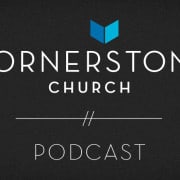Many times in prayer we may have asked our Father, “Lord, let your will be done”. We can often say that without actually thinking about the consequence of this prayer and the response it needs from us. Are we willing to lay down our agenda, our method, our wishes, no matter how good they sound, if God says we ought to do things differently – His way?
This was the focus for Children’s Church this Sunday. Matthew 6:10 says, “Your will be done on Earth as it is in Heaven”.
Our Part
Our children were taught how we, as people, feel so proud and successful when we get things right, e.g. win a game, answer correctly, fix a problem etc. We are happy that our efforts were right. But many times we are also wrong. What then? Well, we know that God’s will, His effort and plans are always right and He is always successful.
Jesus taught us to ask the Father to let His plans happen and that we would seek His plan and that we would obey, no matter how we may disagree or how strange God’s plan may sound. We looked at the example of Joshua and how God told him to march around the city of Jericho, blow their trumpet, and then the walls would fall down. Surely no person would have come up with that idea, but that was God’s plan, and Joshua asked that God’s will be done, obeyed, and the walls fell down.
So we explained that we need to speak to God, constantly seeking His plans, His thoughts, His advice and His leadership, for He will never fail.
Your Part
As you continue to pray with your children, this week begin asking God to share His will for us personally, for your family and for the Church. I believe that God will give incredible ideas to our children and to your mom and dad on how every day in our different environments, be it school or work, we can live out God’s plans.
Ask your children what they think God wants to do in different situations. Let’s all learn to seek His will first. Also, speak to your children about the faith that God gives us to obey Him, like to obey and march around the city wall.
We cannot wait to hear and see the amazing decisions that our children will make in obeying God that will impact our city with such life. Different crafts were made to remember the story of Joshua. They looked wonderful.
– Children’s Church team






